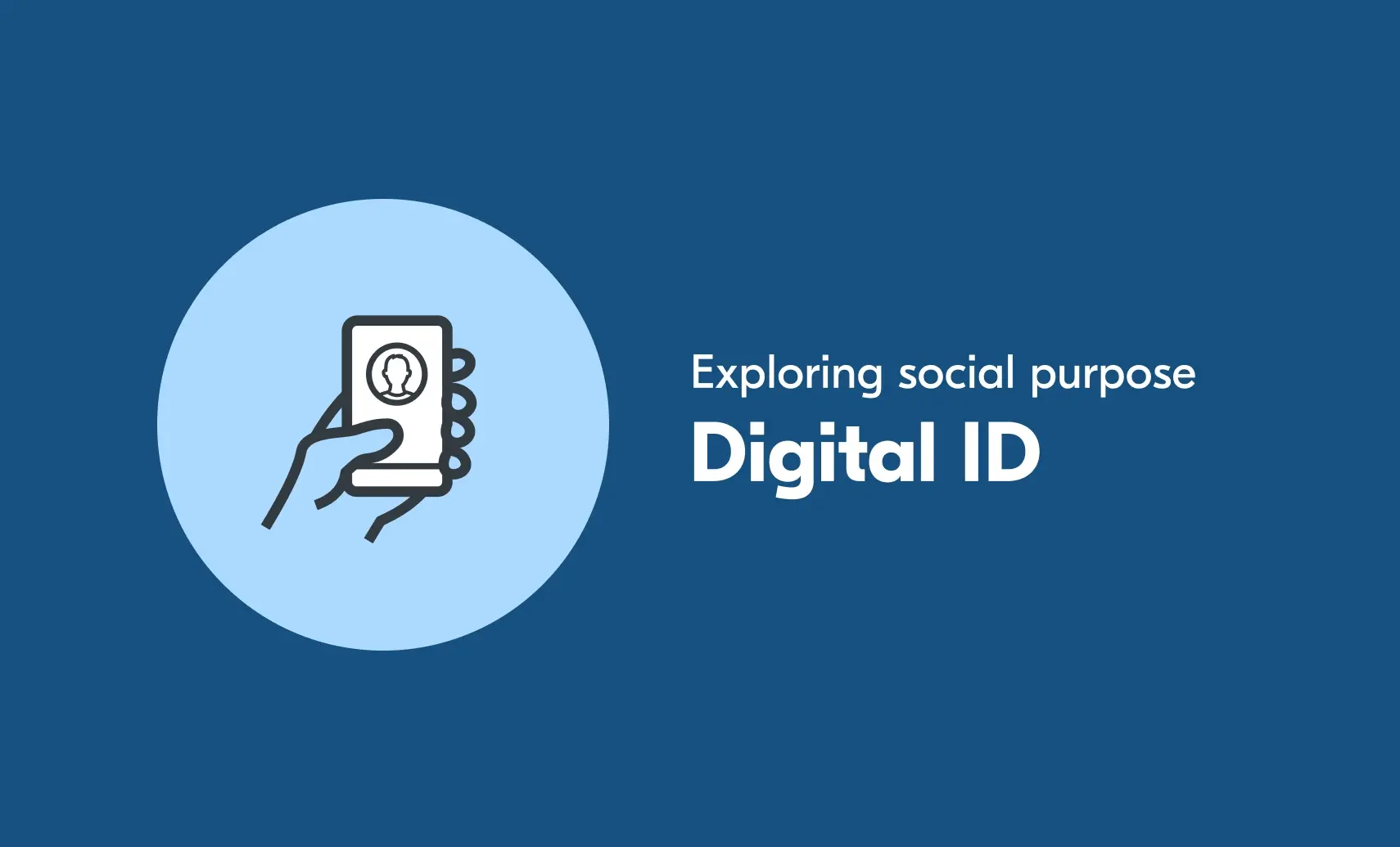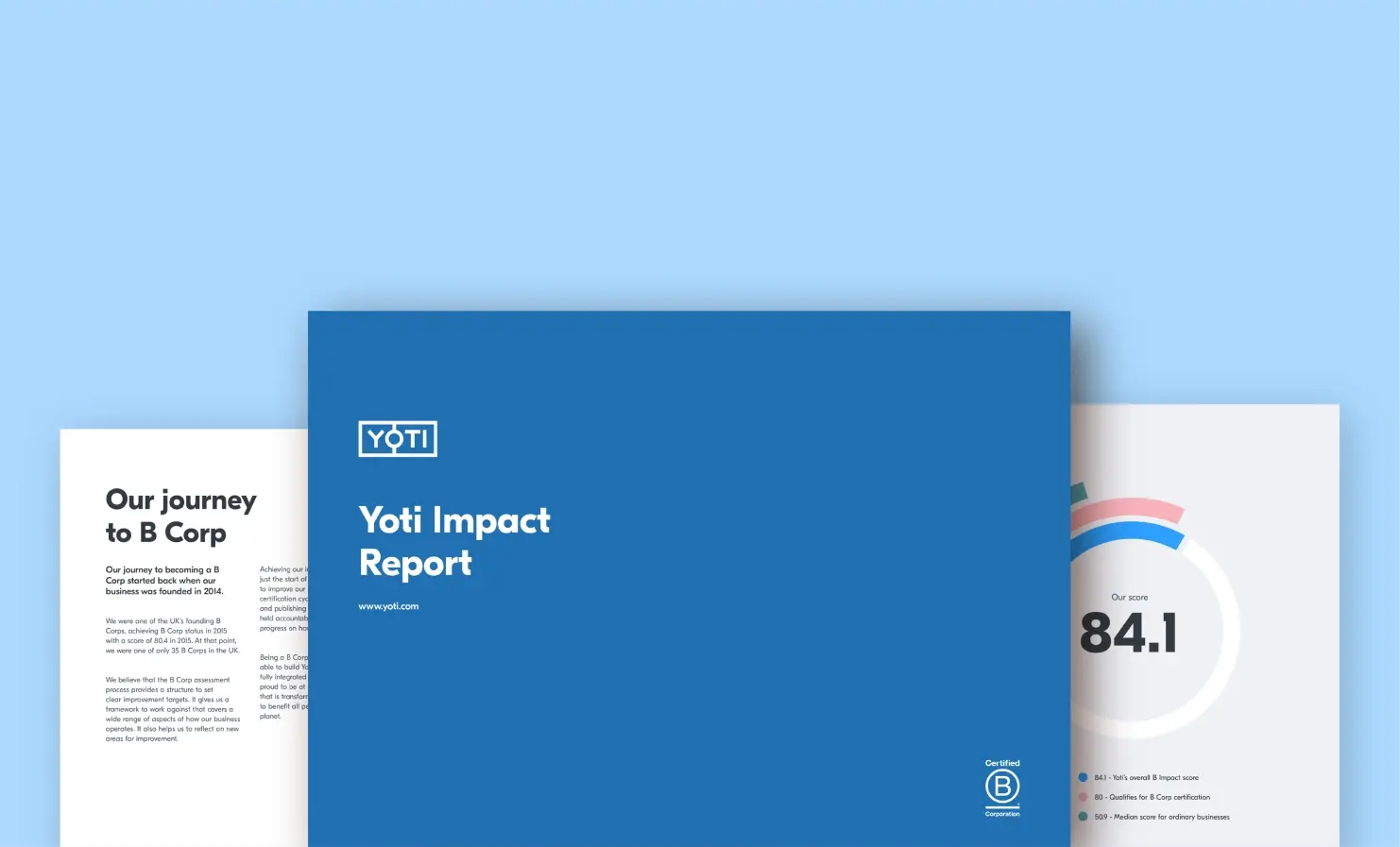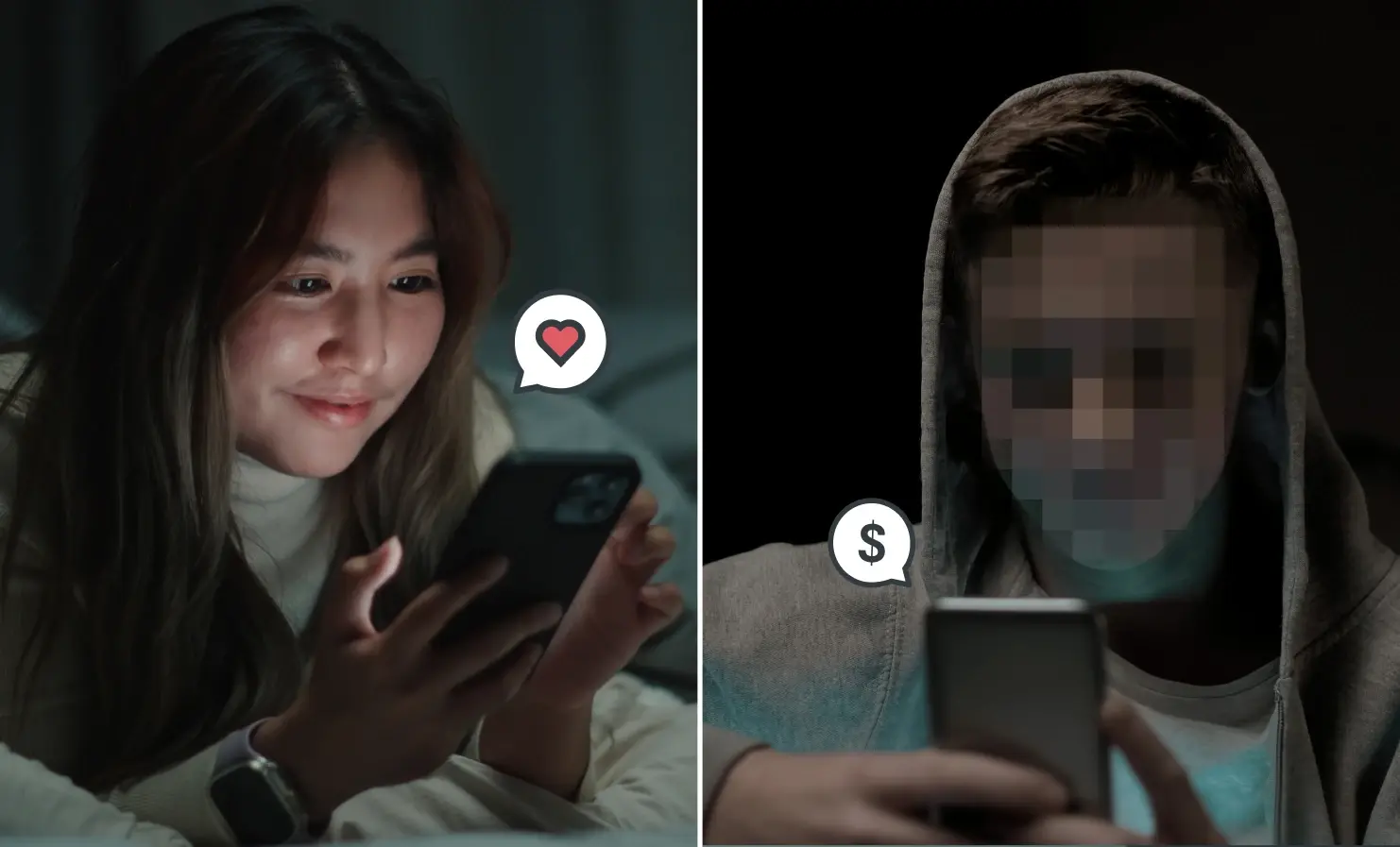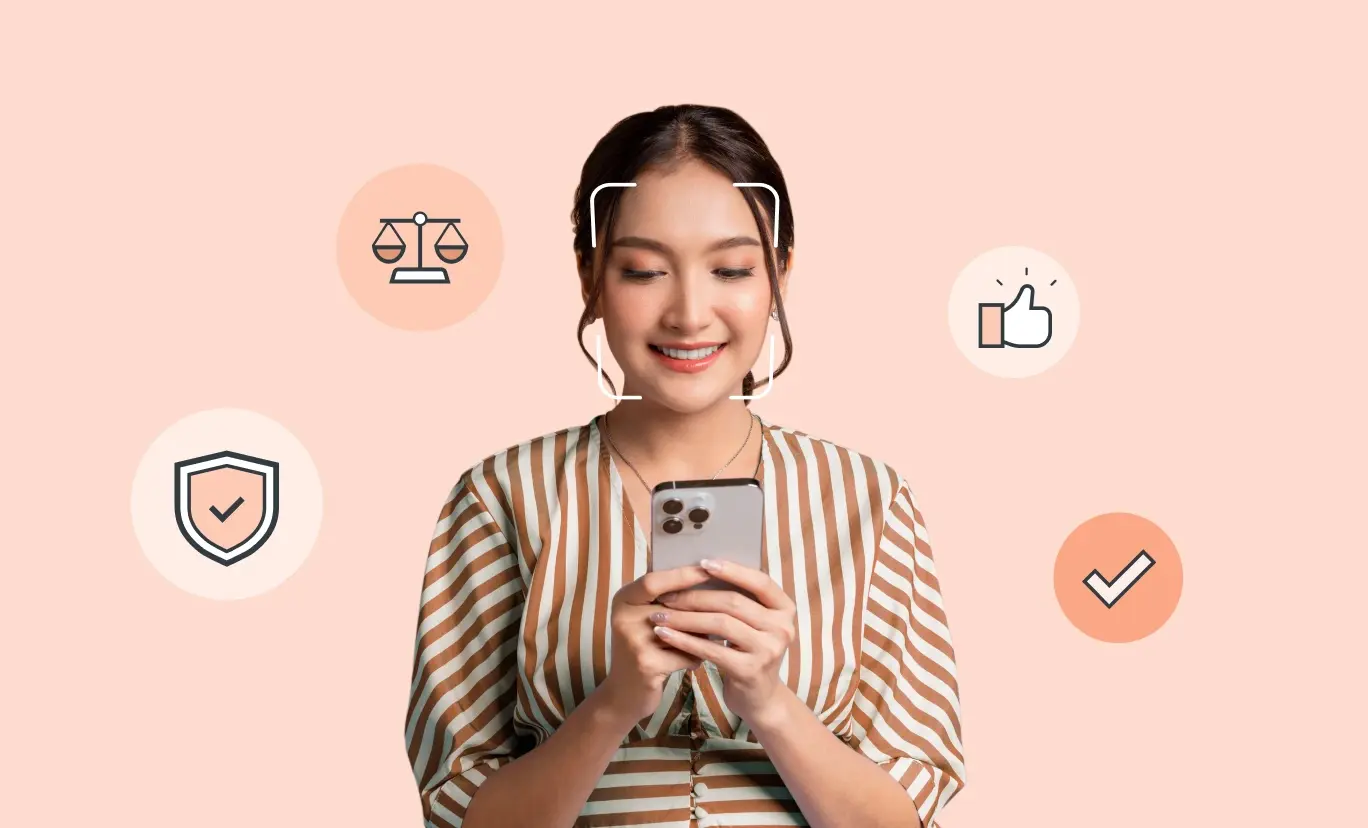
At Yoti, social purpose is at the heart of everything we do. When we create new products, we try to think of the social challenges that our technology could help tackle. In this case, that’s helping people prove who they are, safely and securely.
This series explores the potential of our products to meaningfully help individual users and wider society. This article focuses on the everyday problems that Digital IDs can help to solve.
What can you use a Digital ID for?
You need an identity, or some way of proving who you are, to access a variety of goods, services, opportunities and experiences.
These might include:
- accessing public services, such as healthcare and education
- receiving public support, such as pensions, benefits and loans
- travelling to another country
- buying or selling land
- accessing financial opportunities, such as opening a bank account or applying for a mortgage
- buying a mobile phone or SIM card
- proving age to access age-restricted goods or services
- shopping online
- proving right to work or status
How could a Digital ID app help?
To access many of these services, it’s helpful, or in some cases necessary, to have a recognised identity. For example, you may need to prove who you are to purchase age-restricted items, to collect a parcel, or to prove your right to work.
A Digital ID offers a secure, private and more convenient way to prove your age and identity. We believe it can also help to address a range of challenges:
Inclusion
Having an identity is both a human right and one of the UN’s 17 Sustainable Development Goals. Yet over one billion people globally don’t have access to an official identity document. If they are unable to access some of the services and opportunities outlined above, these individuals risk becoming even more vulnerable.
Financial and infrastructure issues exclude millions of people from proving their identity. Most of the people affected by this include those on lower incomes, living in rural areas, young people and those who are marginalised by society.
Without an identity, many are locked out of accessing essential goods and services. However, creating a Digital ID could help these excluded groups control, safeguard and prove their identity.
Our Digital ID app can be set up using a government-issued identity document and a biometric selfie. Once verified, you have a Digital ID you can use to securely prove your identity. To make our Digital ID accessible to as many people as possible, we accept over 350 documents from around the world, and we’re always working to add more.
Alongside passports and driving licences, we also accept several other documents. For example, in the UK, you can set up your Digital ID using a CitizenCard. This is a more affordable option and doesn’t require the user to have any other physical ID documents.
Convenience
A Digital ID gives you a convenient and privacy-preserving way to share your personal information. To create a Digital ID, you only need to verify your identity details once. After you’ve done this, you have a reusable Digital ID which you can use to instantly access goods and services.
An app removes the tedious process of having to fill out forms that request lots of personal information over and over again. Instead, an organisation can simply request that you share your verified details via our Digital ID app. Since most people always have their smartphone with them, the time taken to securely share your information can be reduced to a matter of minutes.
Data security
The threat of digital fraud increases the need for secure digital identities. A recent surge in high-profile data breaches has helped to raise awareness of just how vulnerable people’s data can be.
A good Digital ID should be carefully designed to put you in control of your personal data. With our Digital ID, you always have to consent to share your information and there’s no way for us to identify you when you use it. Nor can we see the specific information that you’ve shared.
This is because there’s a complex database architecture behind our app. Each piece of data is encrypted, made unreadable and then stored individually. To access this data, you need an encryption key which is stored within your phone. This means that the key to unlocking your data is in your hands, and your hands only.
With a Digital ID, your identity is stored safely within the app which only you can access with a 5-digit code or your unique biometrics. Alongside this is the additional layer of protection from the phone’s lock screen.
It also eliminates the need to carry around physical identity documents, which can be easily lost, damaged or stolen. This is particularly a problem for young people who need to prove their age more frequently than those who look visibly older.
For young people in the UK, a passport is often their only form of ID, and that’s if they have one at all. If a young person needs to prove their age at a cinema to watch an age-restricted film, it’s a disproportionate risk to take their passport with them. Instead, they can prove their age using our Digital ID app, with no chance of losing their passport.
Data minimisation
Every time you prove your age or identity with a physical document, you share more information than the organisation actually needs. For example, when showing your passport to buy age-restricted goods, it’s not possible to prove just your age without also revealing details like your date of birth, full name, passport number and photo.
In this case, a Digital ID is more private and secure than showing a physical document. Through the app, you can share specific information, such as your age or simply that you’re ‘over 18’. The business doesn’t even need to know your exact date of birth, let alone any other personal information.
The only thing they need to know is that you’re over the required age threshold and that the Digital ID belongs to you. By sharing less data, you are more protected against the risks of identity theft and fraud.
Personal safety
People are increasingly using the internet to date, find trustworthy tradespeople, or buy and sell goods. As more of our interactions take place online, it can be hard to know if the person you’re speaking to is who they say they are.
A Digital ID allows you to confirm who you’re speaking with. By having a peer-to-peer identity check function, you can privately share personal details with the people you meet online. All information shared with Yoti’s peer-to-peer checks is verified by us, so you can be sure that the details you’re receiving are correct.
For example, you may want to verify the name, age and gender of the person you are speaking to online before you meet up with them for the first time. Or you may want to check their mobile phone number or qualifications.
Alongside a team of security experts, Yoti’s automated technology can detect forgeries, meaning only genuine users can create a Digital ID. This not only gives people more peace of mind and confidence about who they’re speaking to, but it also helps protect them from fraudsters.
Prove your identity safely and securely
A Digital ID can address a whole host of challenges. Whether that be improving the safety of your personal data, helping to minimise data sharing or giving an identity to those without physical documents, a Digital ID can help you prove who you are, safely and securely.
If you’d like to know more about our Digital ID app, then please get in touch.



